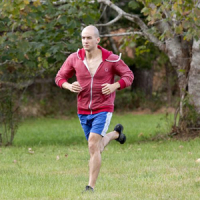Dr. Frank Lipman is a functional medicine doctor who was trained in Western medicine before learning acupuncture and chinese medicine too.

I had the wonderful experience of interviewing him for a virtual conference I’m hosting with Entheos at the end of March on how to optimize everything in your life. When we spoke, Dr. Lipman said a number of eye opening things. But an overarching theme that he talked about was how diet affects the gut, and how imbalances in the gut are responsible for so many of the chronic illnesses that we see increasing every day.
You can listen to popular media and go gluten free, or dairy free, sugar free, and even fruit free and still not get to the heart of your issue. The thing about diet that is so amazing (and confusing!) is that everyone is an individual and thus everyone needs a different—even if only slightly—approach to improving their health through diet. Even though elements like gluten and sugar seem to cause some level of negative response in everyone, we all have a threshold. For some, that threshold might be a piece of bread or an ice cream cone once in a while. For others it may be absolutely nothing. In order to find out, there are some qualitative and quantitative ways that you can determine how your food makes you feel and affects your performance. It’s also really important to understand that often times when looking at weight loss, performance enhancement, or overcoming a chronic illness, the items you remove can be as important if not more important than the things you add. You can get a traditional food sensitivity blood panel done but they are notoriously inconsistent.
There are easily one thousand or more food tracking apps on the iTunes app store, but one in particular is really useful when trying to bring that awareness back to how what you eat affects the way you feel.
That app is Thryve.
Thryve lets you take a picture of your food and estimate the amounts of proteins, carbs, and fats, but it goes a step further and asks you how you feel.
A lot of people experience that 3 o’clock crash that sends them running to the coffee machine and never think that maybe the bagel they had 2 hours earlier or even the double espresso is what’s currently making them take an energy dip. In an ideal world everyone would have perfect awareness and be able to correlate everything that happens to something else that already happened but that’s just not realistic. Thryve is a great start.
If you want to get a little more geeky about things, but also more accurate, you can actually roll your own solution using a website like IFTTT (which stands for “If This Then That” Its slogan: “Put the internet to work for you.”). I think that’s pretty appropriate considering we are trying to determine cause and effect. With If This Then That, you can make a “recipe” whereby a certain trigger results in a different action. In my case, I created a recipe (you can copy it and use it here) where all I have to do is take a picture of my food with Instagram and tag it FT for food tracker and then using a combination of Gmail and FollowUp.cc I get an email 3 hours later whith the picture and the question “How do you feel after eating X.”
I don’t even record the answers, simply reminding myself of what I ate just a couple hours earlier has changed my entire perspective on the way I eat and the decisions I make when it comes to food. You can decide what works best for you in terms of the services and systems but the end result should be the same, a few hours after you eat something, find out how it makes you feel.
For the most quantitative testing you can do at home you’ll have to turn to the research discovered through Dr. Coca’s pulse test. Basically he found that if you took a baseline heart rate first thing in the morning, and then took measurements at key points throughout the day you could identify food sensitivities through elevated heart rate.
The nice thing about a test like this is that it’s completely free and you can do it without any equipment. The only thing is that you end up taking over a dozen heart rate measurements and it can become tedious.
Fortunately, the Food Sense App for the iPhone does the grunt work for you. It works as a food journal and prompts you to take your pulse when it needs it. If you have a chest strap heart rate monitor than the whole process becomes pretty effortless.
Having this information may seem simple but balancing the gut, as Dr. Lipman explained, is a key to good health. If there are certain foods that take you out of that balance, then they need to be avoided at all costs.
And sometimes, technology can help you keep track.





